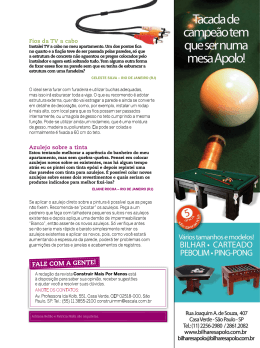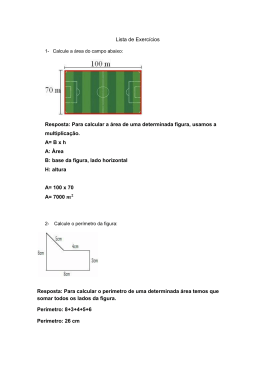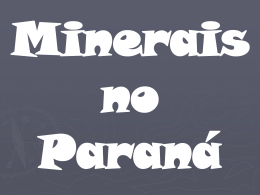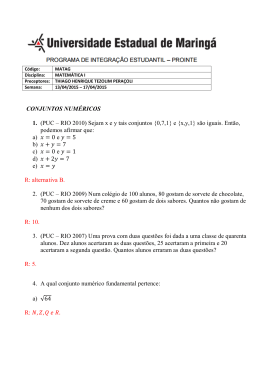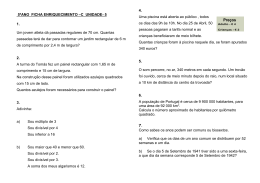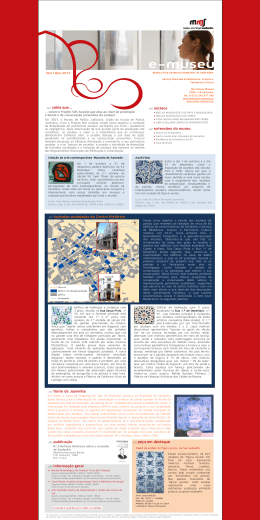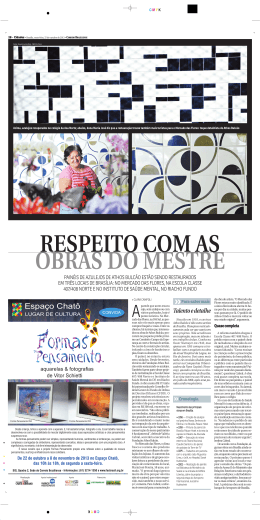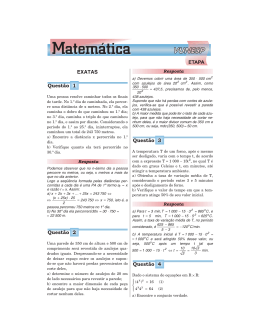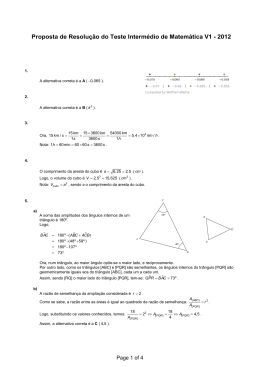Intervenções Novembro / November 2013 11 Intervenção de conservação e restauro dos painéis de azulejos da Capela de Santa Quitéria – Carril, Torres Novas A capela de Santa Quitéria, situada no local do Carril, freguesia de Santa Maria, concelho de Torres Novas, foi mandada edificar por vontade de D. Quitéria Maria de Vasconcelos e Sousa, expressa no seu testamento datado de 1749. A construção ocorreu depois de 1753, mas antes de 1758, quando a sua administração já era feita pelos frades oratorianos de São Filipe Nery. Com a extinção das ordens religiosas, em 1834, a capela passou para a posse do estado e, mais tarde, foi comprada pelo General António César de Vasconcelos Correia. Trata-se de um edifício de arquitectura chã, de planta longitudinal e galilé na fachada. Como património integrado, apresenta no interior um retábulo de estilo Neoclássico e um silhar de azulejos que se insere no estilo Rococó. Segundo a descrição de J. M. dos Santos Simões, é um “silhar de 9 [azulejos] de alto em painéis de azulejo figurado azul, emolduramento concheado vulgar, típico de cerca de 1760”. A nível iconográfico, o painel apresenta representações de cenas bucólicas e palacianas, bem como algumas cenas religiosas interpretadas por um frade franciscano. ISSN 2183-0657 Conservation work on the tile panels of the Chapel of Santa Quitéria – Carril, Torres Novas The chapel of Santa Quitéria, located in Carril, parish of Santa Maria, municipality of Torres Novas, was build by desire of D. Quitéria Maria de Vasconcelos e Sousa, expressed in her will dated of 1749. The construction took place after 1753 but before 1758, when its administration was already done by the oratory friars of Saint Philipe Neri. With the extinction of the religious orders in 1834, the chapel came into public possession and later was purchased by General António César de Vasconcelos Correia. It is built in the style of Portuguese plain architecture, with a longitudinal plan and porch on the façade. Inside presents a Neo-classical altarpiece and ashlar tiles in Rococo style. According to J. M. dos Santos Simões, this is an “ashlar of 9 [tiles] high in figured blue tile panels, framing in concheado vulgar, typical of circa 1760”. At an iconographic level, the panel depicts pastoral and palatial scenes as well as some religious scenes interpreted by a Franciscan friar. A temática destes painéis não é comum neste tipo de espaços, onde normalmente é apresentada uma iconografia religiosa, por vezes alusiva ao santo padroeiro. Segundo testemunho oral recolhido no local, os “painéis teriam vindo de um antigo palácio de Lisboa”, mas não foi possível confirmar The theme of these panels is not common in this kind of spaces, where it is more frequent a religious iconography, sometimes referring to the patron saint. According to an oral testimony, the “panels would have come from an ancient palace in Lisbon”, but this was not possible to confirm. However, considering that the General António César de Vasconcelos Correia endowed the chapel with an image of the Lord of the Afflicted Intervenções desenvolvidas no Instituto Politécnico de Tomar no âmbito dos cursos de licenciatura e de mestrado em Conservação e Restauro e no âmbito de outras actividades Interventions developed at the Polytechnic Institute of Tomar within the Graduate and the Master courses in Conservation and Restoration and in relation to other activities esta informação. No entanto, considerando que o General António César de Vasconcelos Correia dotou a capela com uma imagem do Senhor dos Aflitos oriunda de um convento de Santarém, é possível que também tenha sido ele a levar para a capela os painéis adquiridos noutro local. De qualquer modo, tal como se concluiu durante a intervenção, parece seguro que os painéis não foram produzidos originalmente para esta capela. A intervenção de conservação e restauro dos painéis pretendeu dar resposta aos principais problemas identificados: deficiente leitura devido a azulejos trocados; perda de vidrado por cristalização de sais solúveis; falta de azulejos; e risco de perda de azulejos por perda da função ligante das argamassas de assentamento. A intervenção de conservação e restauro foi realizada de forma a minimizar os possíveis impactos negativos que este tipo de acções pode ocasionar. 2 | Intervenções • Novembro / November 2013 that came from a convent in Santarém, it is possible that he also brought to the chapel the panels purchased elsewhere. Nonetheless, as concluded during the intervention, it seems certain that the panels were not originally produced for this chapel. The conservation and restoration action on the panels intended to address the key issues identified: poor reading due to tile exchange; glaze loss due to soluble salts crystallization; lack of tiles; and risk of tiles loss by lack of binder function of the cement mortar. The conservation and restoration intervention was performed in a way that minimizes the possible negative impacts that this type of interventions can cause. Aspeto geral dos painéis antes da intervenção. Um dos principais problemas correspondia à perturbação da leitura das cenas motivada por azulejos trocados. General appearance of the panels before intervention. One of the main problems was due to a disturbance of reading of the scenes produced by exchanged tiles. Em cima: Registo gráfico antes do levantamento dos azulejos. Top: Graphic record before lifting the tiles. Ao lado: Pormenor da remoção mecânica dos azulejos. Antes da sua remoção foram abertas as juntas e foi aplicado um faceamento com gaze e adesivo acrílico. Left: Detail of mechanical removal of the tiles. Before their removal, the joints were opened and facing was applied with gauze and acrylic adhesive. Novembro / November 2013 • Intervenções | 3 À esquerda, em cima: Após o levantamento dos azulejos, foi removida a argamassa do tardoz com recurso a espátula e foi possível identificar a correta posição dos azulejos no painel. Left, top: After tiles survey, the mortar was removed from the masonry using a spatula and it was then possible to identify the correct position of the tiles in the panel. À esquerda, ao lado: Consolidação por injeção da argamassa de assentamento dos azulejos. On the left: Consolidation by injection of the mortar between tiles. Em cima: Limpeza de vestígios de tinta sobre o vidrado, com água desionizada e detergente neutro. Above: Cleaning of traces of paint on the glaze, with deionized water and a mild detergent. 4 | Intervenções • Novembro / November 2013 Em cima: Preparação da superfície da parede para a recolocação dos azulejos trocados ou em destacamento e dos azulejos novos. Above: Preparation of the wall surface for replacement of exchanged, detached and new tiles. À direita: Processo de produção de novos azulejos. A inexistência de uma quantidade significativa de azulejos, sobretudo no centro dos painéis e na cercadura, levou à produção de novos azulejos. Para o efeito foi realizado o levantamento do desenho da cercadura. On the right: Procedures for the production of new tiles. The absence of a significant amount of tiles, particularly in the centre and in the edge of the panels, led to the production of new tiles. For this purpose it was reconstituted the border design. Novembro / November 2013 • Intervenções | 5 À esquerda: Processo de produção de novos azulejos. Nas áreas correspondentes aos motivos decorativos em falta, foram realizadas algumas formas por continuidade formal usando uma pincelada semelhante. De modo a deixar clara a diferenciação, foi utilizado um tom de azul mais claro do que o original. Left: Procedures for the production new tiles. Areas with missing motifs were made by creating a formal continuity with the application of a similar stroke. In order to make a differentiation, it was applied a shade of blue lighter than the original. Em cima: Ação de sensibilização que teve como objetivo expor a intervenção em curso. Teve a participação da comunidade local, assim como de alunos e docentes da licenciatura e do mestrado. Above: Awareness raising action with the purpose of disseminating the ongoing intervention. The action had the participation of the local community, as well as students and teachers of the graduate and the master conservation courses. 6 | Intervenções • Novembro / November 2013 Intervenções Novembro / November 2013 ISSN 2183-0657 Organização deste boletim 11 Organization of this bulletin Ricardo Triães Participantes nas intervenções Participants in the interventions Docente da licenciatura e do mestrado em Conservação e Restauro: Teacher of the graduate and the master courses in Conservation and Restoration: Ricardo Triães Conservadores-restauradores: Conservators-restorers: Inês Salgueiro Carla Garvão Alunos do mestrado: Master students: Ânia Chasqueira Filipa Formigo Sara Araújo Sara Mariano Cristina Reis Adriano Machado Raquel Diogo Mattia Canetto Tradução Translation Leonor Loureiro Edição e paginação Painéis após a intervenção de conservação e restauro. Panels after the conservation and restoration intervention. Agradecimentos / Acknowledgments P.e Pedro Marques, Eng.ª Noémia Faria, Vitorino Freitas, Lourdes Freitas, Maria Amélia Gameiro, Manuel Coelho Edition and layout António João Cruz Escola Superior de Tecnologia de Tomar http://www.cr.estt.ipt.pt
Download
